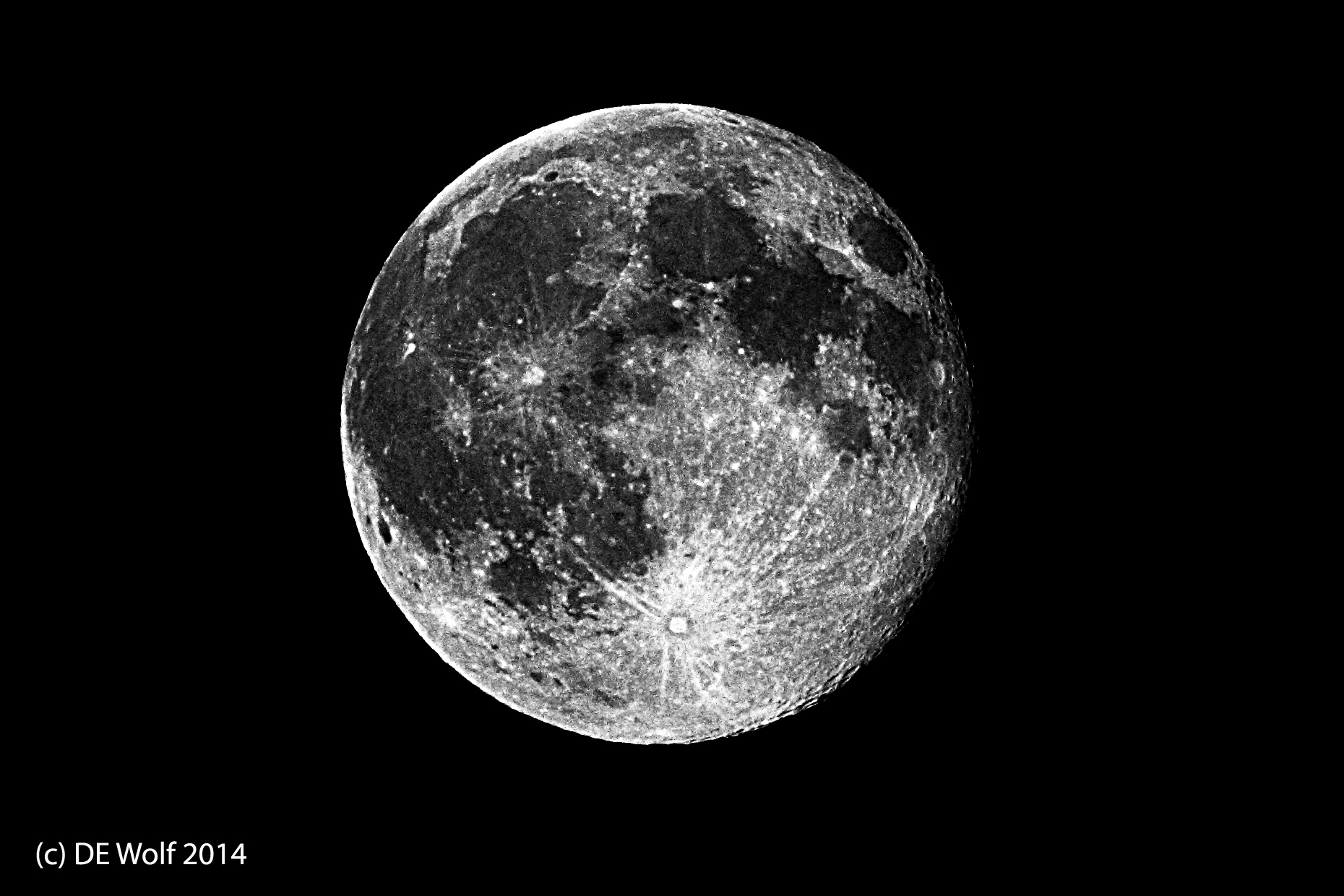It is almost midnight here in Massachusetts. It is just a bit sultry, but the sky is cloudless. The moon has just risen above the trees. The weathermen and weatherwomen have been abuzz all day about the “Super Moon.” This is a relatively rare event, where the full moon is somewhat larger than usual because it occurs when the moon reaches perigee. This is the point where the moon in its elliptical orbit around the Earth reaches its closest point. For those of you who missed last night, do not dispair. The next supermoon is August 10, and it will be even closer to the Earth then.
I thought this an excellent opportunity to really put my Canon EF100-400mm f/4.5-5.6L IS USM to the test at its maximum extension of 400 mm, effective focal length because of the chip size is 640 mm. I tripod mounted the lens and I turned the image stabilization off. I am told that things get funky if you tripod mount with stabilization on. OK. I also choose to shift to manual focus. I also chose manual exposure and used the old rule of thumb 1/ISO at f/16; so since the ISO was 400, I used 1/1250 at f/8.0. The results are shown in Figure 1. I am very pleased with the image.
And as I fended off mosquitoes and took this picture, my thoughts wandered to consider John Draper (1811 – 1882). His first daguerreotype of the moon was taken on March 26, 1839. I do a quick calculation to add to my wonder – 175 years ago. That is nothing compared to Galileo Galilei, who turned the first glass to the moon over fiver hundred years ago. And he said simply:
“It is a beautiful and delightful sight to behold the body of the Moon.”
― Galileo Galilei, The Starry Messenger, Venice 1610: “From Doubt to Astonishment”


Your comment section does not work.
Rajan, Hmm I see that you had problems. Please see if I fixed your problem. David
I will test if you have fixed it.
I had written a response calculating why does your camera seems to be as good as a low mag telescope or perhaps even a binocular. This photograph is really amazing and in my past days I had taken it by placing my camera on the telescope viewer.
Somehow the response got erased due to a bug in your response section.
I will calculate again and re-post it or if I cannot perhaps you may have your own view of why?
Thanks